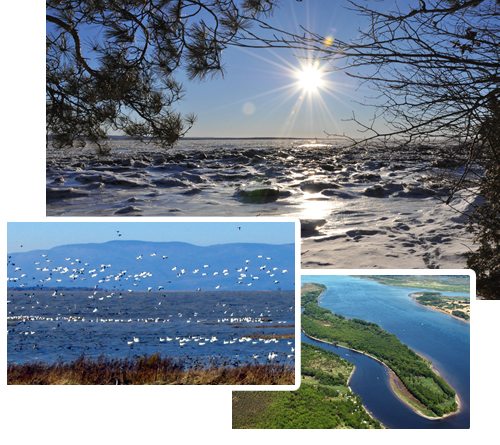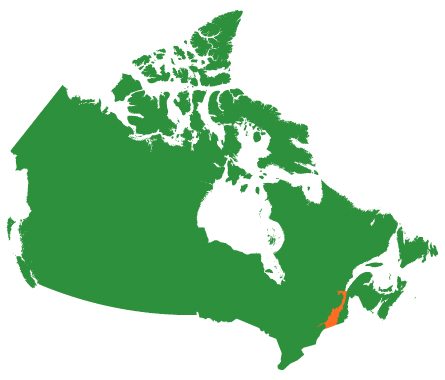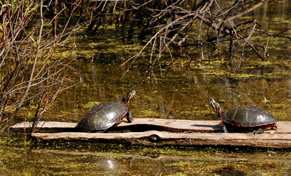St. Lawrence Valley
Federal ecozones: Mixedwood Plains
Area: 36,475 km2
Natural cover: 20,797
Per cent natural: 57%
Protected area: 5,752 km2
Per cent protected: 16%
Number of NCC projects (all): 194
Number of species of birds: 256
Number of species of trees: 82
Number of species of mammals: 78
Number of species of amphibians: 23
Estimated human population: 6,236,118

Description
The St. Lawrence Valley includes the lowlands along the St. Lawrence, Ottawa and Saguenay rivers. This is a landscape dominated by these massive rivers, as well as forests and fertile agricultural lands. Mixedwood forests of sugar maple, yellow birch, eastern hemlock and eastern white pine are the dominant forest type in this region.
St. Lawrence Valley Landscape

Conservation values
The lands and waters of the St. Lawrence Valley have a very high abundance and diversity of species and habitats. Although the region has been heavily impacted, there are still intact shoreline ecosystems and important habitats for rare species.
The estuary and coasts are very important for marine and shoreline species. In addition to marine mammals, seabirds and marine fishes migrate to the area to feed in the rich waters of the estuary.
The St. Lawrence Valley biodiversity hot spot includes habitat for several endemic species, such as copper redhorse and Victorin’s gentian.
It also includes the meeting place between the St. Lawrence River and the influence of the Atlantic Ocean, creating a large and biologically diverse estuary ecosystem, which includes habitat for blue whale, fin whale, minke whale and beluga whale. The salt marshes in the estuary provide habitat for many rare species, including butterflies and plants that are endemic to the area.
Challenges/Threats
The St. Lawrence Valley is one the most densely populated areas of Canada, and is dominated by private lands. It is characterized by agricultural lands, and habitat loss and fragmentation is continuing.
Traditional settlement patterns of long, narrow strips along the river create unique challenges for conservation. Many wetlands have historically been converted for agriculture and development; the last remaining ones, including peat bogs, are still very vulnerable.
What NCC is doing
NCC has identified priority conservation sites in a number of natural areas, including:
- Montreal Greenbelt
- St. Lawrence Islands
- Richelieu River
- Yamaska Rivers
- Rivers and islands along the St. Lawrence estuary
- Lake Champlain
- Haut-Saint-Laurent
In addition to habitat protection, management and restoration, NCC is also working with municipalities to share information about important biodiversity areas. Species at risk that are protected on NCC properties in this region include spiny softshell turtle, green dragon, channel darter and several birds.

Did you know?
- The St. Lawrence is one of the world’s largest rivers, draining 20 per cent of the world’s surface or available fresh water.
- The St. Lawrence River estuary is the largest estuary in the world and is a key area for marine mammals, including the beluga whale.
- The river and wetlands support important migratory species (birds and fishes), including the American eel.
- More than 50 per cent of Quebec’s vulnerable or threatened species occur in this region.
Photo Credits (Top to bottom): Claude Duchaine, NCC, NCC, Claude Duchaine.


